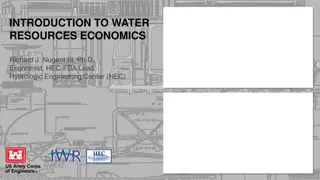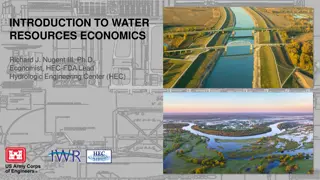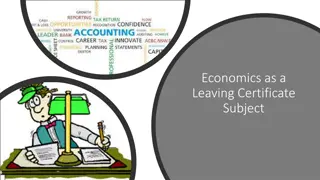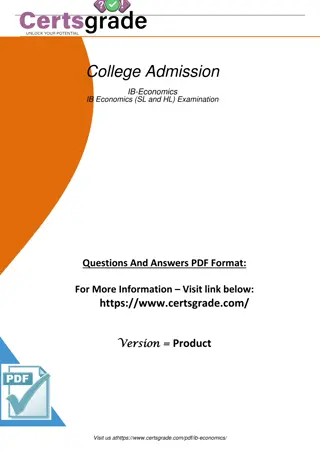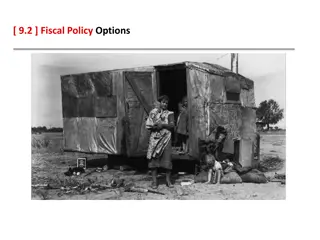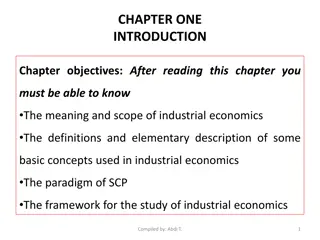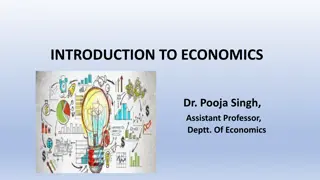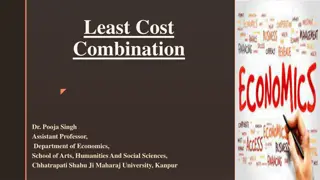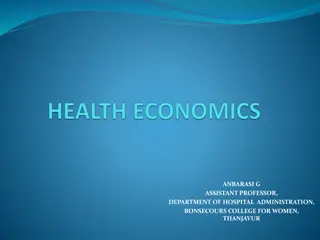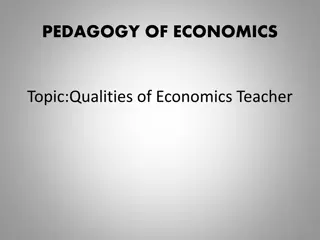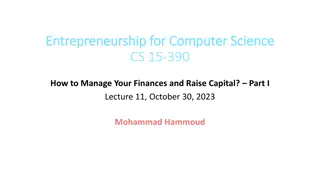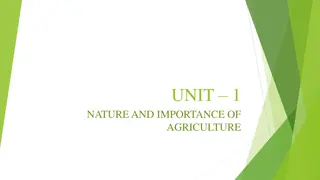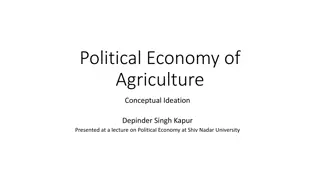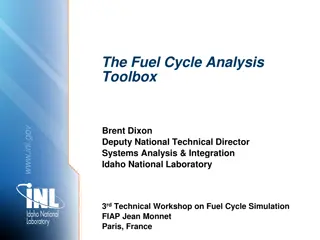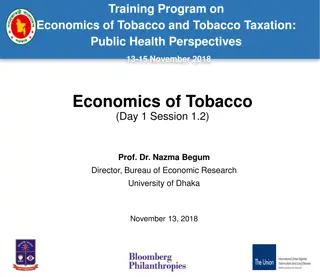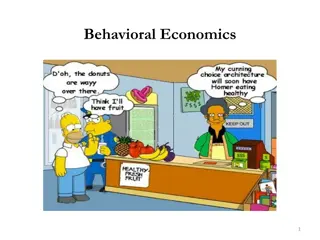Economics: Tools and Concepts
Economics involves analyzing data, developing models, and using tools like charts, graphs, and tables. Economists study microeconomics focusing on individual elements and macroeconomics studying the economy as a whole.
Download Presentation

Please find below an Image/Link to download the presentation.
The content on the website is provided AS IS for your information and personal use only. It may not be sold, licensed, or shared on other websites without obtaining consent from the author.If you encounter any issues during the download, it is possible that the publisher has removed the file from their server.
You are allowed to download the files provided on this website for personal or commercial use, subject to the condition that they are used lawfully. All files are the property of their respective owners.
The content on the website is provided AS IS for your information and personal use only. It may not be sold, licensed, or shared on other websites without obtaining consent from the author.
E N D
Presentation Transcript
Chapter 1: The Economic Way of Thinking Section 4: The Economist s Toolbox (pgs.24-31)
Working with Data http://data.library.virginia.edu/files/statLabWordCloudBig.png There is an old joke that economics is everything we already know expressed in a language we don t understand. Since economists can t interview every person in the nation about economic choices, they rely on statistics numerical data or information to see patterns of behavior. To help organize and interpret the data they collect, they develop economic models.
Using Economic Models http://cdn.static-economist.com/sites/default/files/link1_2.jpg Economic models are based on assumptions and are simplified b/c they focus on a limited number of variables. Economists can express their models in words, graphs, or equations. Models help economists predict future economic activity.
Using Charts and Tables http://www.economics-charts.com/images/sample.png Among the most common tools are charts and tables, in which data are arranged and displayed in rows and columns. By showing numbers in relation to other numbers, charts and tables can reveal patterns in the data.
Using Graphs When economists are interested in identifying trends in statistics, they often use graphs, or visual representations of numerical relationships. The most common type is the line graph, which are good to show changes over time. Line graphs use at least two sets of numbers. Bar graphs are useful for comparing items by a single measure. Pie graphs show how parts make up the whole. See examples on page 26. http://www.bbc.co.uk/staticarchive/7f637948030b231d9738fa7833a4ce17bf5eeb0d.gif
Microeconomics Micro means small, t/f microeconomics examines specific, individual elements in an economy. This includes prices, costs, profits, competition, and the behavior of consumers and producers. Within microeconomics you might study business organization, labor markets, agricultural economics, and economics of environmental issues . http://comps.canstockphoto.com/can-stock-photo_csp11731009.jpg
Macroeconomics Macro means large, which means you are studying the big picture or the economy as a whole. Macroeconomics studies the consumer sector, also called the household sector. It also, examines the business sector, the public or government sector that part of the economy that provides public goods and services. Macroeconomists bring a national or global perspective to their work. They study the monetary system, the ups and downs of the business cycles, and the impact of international trade and its effect on rich and poor nations. http://www.askassignmenthelp.com/img/macroeconomics-assignment-help.jpg
Positive Economics This is a way of describing and explaining economics as it is, not as it should be. Positive economics uses the scientific method to observe data, hypothesize, test, refine, and continue testing. Statements made within positive economics can be tested against real world data and either proved or disproved. https://www.cals.ncsu.edu/course/are012/lecture/lectur1/img006.GIF
Normative Economics https://www.cals.ncsu.edu/course/are012/lecture/lectur1/img005.GIF This is a way of describing and explaining what economic behavior ought to be, not what it actually is. Normative economics, in contrast, is based on value judgments. It goes beyond the facts to ask if actions are good. Since the values of people differ, so do the recommendations based on normative economics.
Adam Smith: Founder of Modern Economics He wrote The Wealth of Nations, in 1776. In this book he challenged the idea of mercantilism a system in which the government of the homeland controlled trade with its colonies. Instead, he argued, a nation would be wealthier if it engaged in free trade. In a free market both the buyer and seller benefit from each transaction. https://upload.wikimedia.org/wikipedia/commons/4/43/Adam_Smith_The_Muir_portrait.jpg


